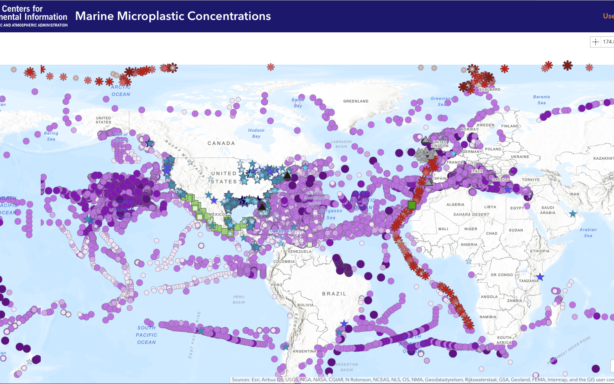10 top tips for your nature positive journey

Global wildlife populations have plunged by nearly 70% since 1970. More than 44,000 species are currently threatened with extinction, with 41% of amphibians and 37% of sharks and rays on the brink of collapse. Overdeveloped land and overfishing, exploitation of natural resources, climate change, pollution and the spread of invasive species are the five main drivers of this loss.
Biodiversity isn’t just necessary for healthy ecosystems; it’s essential for economic growth. Nature degradation could cause a 12% loss to UK GDP in coming years, according to the Green Finance Institute — a larger hit to UK GDP than the 2008 financial crisis or Covid-19. Companies are dependent on nature and the services it provides, from crop pollination and raw materials to flood protection and carbon sequestration. These services are crucial to an organisation’s productivity and resilience. Yet companies (and economies) still freeride on nature’s benefits and are failing to integrate nature’s value into our current economic system.
That is until recently. New regulations and frameworks are increasingly encouraging, if not requiring, companies to halt and reverse nature loss and restore biodiversity, supporting a nature positive future. The new EU Corporate Sustainability Reporting Directive will require disclosure of the impact of larger listed EU businesses on biodiversity and ecosystems from 2024. In the UK, the Biodiversity Net Gain Policy requires developers to deliver a 10% biodiversity net gain (creating or improving natural habitats) with all new developments. Voluntary frameworks are being developed to hold companies accountable for their use of natural assets. The Taskforce on Nature-related Financial Disclosures (TNFD), helps companies assess and account for their nature-based risks and opportunities such as soil erosion and flooding to buildings and restoring natural habitats. The Science Based Targets Network (SBTN), a group of 80+ NGOs and wider partners, has published the first voluntary science-based targets for nature. The SBTN guidance supports businesses to set targets on biodiversity and nature. Examples include targets on water consumption, pollution and deforestation.
Whilst some of the nature-based frameworks and legislation are still voluntary, as with GHG emission reporting and climate target setting, measuring and reporting impacts on nature will no doubt soon be required. So, what practical steps can companies take to restore nature and rebalance biodiversity?
We’ve provided 10 tips to support companies on their nature positive journey.
- Conduct a biodiversity materiality assessment. This helps companies assess the impacts of their operations and supply chains on nature and biodiversity. Once impacts are understood, organisations can take steps to mitigate them. The SBTN provides tools to conduct a materiality assessment and the TNFD has a framework to assess companies’ nature-based risks, opportunities and financial impacts.
- Set targets to restore and prevent biodiversity loss. Examples include water pollution prevention targets, goals to avoid conversion of natural ecosystems, and zero-deforestation commitments. Unilever has committed to achieving a deforestation and conversion-free supply chain, meaning its raw materials such as palm oil, paper, soy and cocoa should no longer be associated with deforested and converted land. The targets relevant to a company will depend on its material nature and biodiversity impacts. Targets must be measurable so progress can be tracked. The SBTN has provided initial guidance to set freshwater and land targets (including partial biodiversity coverage). Ocean targets will be available in 2025.
- Develop a holistic, integrated strategy. Taking a holistic approach to nature strategy embeds it into the wider sustainability strategy and business model. With climate and nature so intrinsically linked, action in one area can support and impact the other’s progress. By integrating nature into a net zero roadmap, organisations can reduce adverse impacts on nature and biodiversity while working towards their climate goals. The SBTN’s ‘Avoid, Reduce, Restore, Regenerate, Transform’ (ARRRT) Action Framework, provides companies with a hierarchical approach to effectively implement a nature strategy.
- Source responsibly. Companies depend on natural resources such as water, timber, copper, coffee, cocoa and energy. But many of these are limited and extracting and using them often carries negative environmental and social impacts. Some businesses are already working to source responsibly, and a biodiversity assessment could highlight other hotspots. Certifications and standards such as the Forest Stewardship Council (FSC) for timber and paper, and Fairtrade for foods, can help with assurance. In 2023, 98% of IKEA’s wood was either FSC-certified or recycled.
- Restore habitats. Once a company has reduced its impact on biodiversity, it should look to restore depleted habitats. Reforestation, wetland restoration, regenerative agriculture, marine ecosystems protection and restoration projects are all good examples of habitat restoration. Choosing restoration projects that align with the company’s nature-based risks helps reduce these risks and supports the business case for more projects like it.
- Integrate nature into infrastructure. Invest in green infrastructure, such as green roofs, permeable pavements, wildflower boxes, rooftop beehives and living walls to support biodiversity in urban landscapes. The new Google London headquarters will have a roof garden with a rainwater irrigation system — providing a habitat for protected local species of bats, birds and insects.
- Improve biodiversity data. Nature and biodiversity has approximately 3,000 metrics, unlike its counterpart climate, which has predominately one — tonnes of carbon dioxide equivalent (tCO2e). Collecting all these nature-based metrics can be challenging. Working with and incentivising suppliers to gather this data down to the farm level will support accurate monitoring of future biodiversity levels and impact measurement.
- Invest in technology that promotes biodiversity. Investing in technology can plug the biodiversity data gap that makes measuring progress against targets challenging. Technologies like agri-tech and nature-tech monitoring systems can help. Chirrup, a biodiversity monitoring solution, uses AI to listen and monitor birds to track and protect the levels of biodiversity in a specific area. Tesco has teamed up with start-up tech innovator AgriSound to monitor insects and bees on its apple orchards, as part of its plan to promote biodiversity in the supply chain.
- Stand up for biodiversity: Engage with stakeholders, including local communities, NGOs and governments, to ensure that biodiversity concerns are acted upon and local knowledge is incorporated into decision-making processes. Sainsbury’s, Nestlé and H&M Group are pushing for mandatory disclosures on nature impacts to be brought in by 2030.
- Give nature a seat at the table. Appoint a member of the board to be nature’s advocate to ensure nature’s voice is heard. Patagonia has gone a step further and made nature its sole shareholder. The founder and former owner, Yvon Chouinard, transferred 98% of the company’s shares to environmental organisation Holdfast Collective. Each year, Holdfast will receive all profits that Patagonia doesn’t need to reinvest — an expected $100 million annually — to protect nature and biodiversity and fight the environmental crisis.
Context supports efforts to develop and implement effective corporate nature positive strategies. If you would like to talk about your organisation’s needs, please get in touch via www.contextsustainability.com or pippa.greenwood@contexteurope.com.






